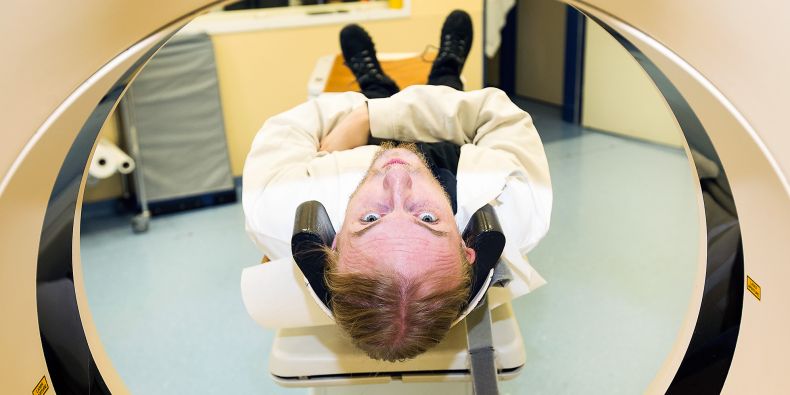Last year, two students of the Faculty of Medicine decided to compare two methods used to treat certain types of cancer. Tomáš Jůza and Martin Jakub Arbet have now been recognized for their research at this year’s European Congress of Radiology in Vienna.
“The design of the experiment arose out of a conversation with Nahum Goldberg, an Israeli professor who taught at our faculty in 2015,” says Jůza. “We decided to compare two different interventions within radiation therapy used to remove tumour tissue: radiofrequency ablation and irreversible electroporation.”
Radiofrequency ablation is regularly used in a number of medical applications. It uses the heat generated by alternating current to, in effect, burn the affected tissue. The second method is more recent and less well described. It uses ultra-short but strong electrical pulses to disrupt cell membranes and cause cell death with less damage to the intercellular substance.
The students studied how the two methods work together with chemotherapeutic agents – in this specific case, with doxorubicin. They observed how the treatment of the tissue impacts the accumulation of the drug in the affected area and nearby areas.
“We were a bit disappointed that our hypothesis – that the newer and less well researched method would produce better experimental results – was not corroborated. It was actually disproved,” says Arbet about the research findings. “But Professor Goldberg assured us that to get statistically significant results stating that something is not working is just as important as to show that it is working.”
However, the path to the results was not straightforward. “We wouldn’t have been able to put together a project like this on our own. We were supervised by Tomáš Andrašina from the Department of Radiology and Nuclear Medicine and we got a lot of help from our colleagues from the Institute of Histology and Embryology and the University of Veterinary and Pharmaceutical Sciences,” says Arbet.
The study was conducted on the liver of three experimental pigs. In two of them chemotherapy was applied together with the interventions, while the control animal did not receive any chemotherapy. The researchers examined the results after 72 hours.
As Jůza explains, “We compared the concentration of doxorubicin in various places, with the central and peripheral zone of damage caused by the procedure studied separately. The peripheral zone is especially important, as this is where the combination of the two treatments may help achieve better clinical results with regard to local recurrence of the tumour.”
They first presented their research last year at the Student Conference of the MU Faculty of Medicine and, most importantly, at this year’s international congress of radiology with almost 3,000 participants from 16 countries. For both students, the study and the opportunity to present it was an interesting experience.
Future careers
Besides the actual research results, Tomáš Jůza also used this project to establish contacts for his future job. “It definitely helped me get a job offer as a radiologist at the University Hospital Brno. I really enjoy the technical side of medicine, so a field that allows me to work with equipment such as the MRI was a clear choice for me.” He goes on to add, “Research is another priority and I would like to continue as a PhD student in medical biophysics.” Jůza has just one more exam to pass before this summer to complete his studies.
Martin Arbet has already completed his studies and is currently gaining clinical experience in Sweden, where he works in a district hospital. “I would like to return to research, even if only part-time, but I also want to gain clinical experience so that I can focus on the topics that are most relevant for the development of modern medicine,” he explains.
However, this success did not mark the end of the students’ participation in this research project. They are currently working on the second round of the experiment designed to measure the results after a different period of time following the intervention.
